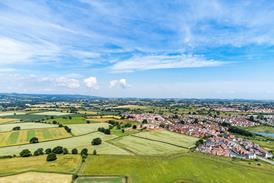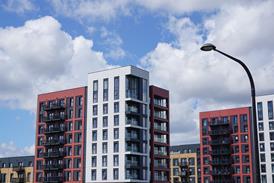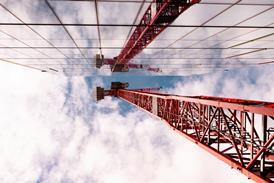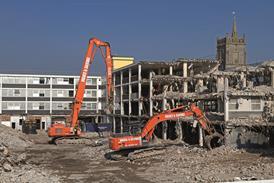The UK sports and leisure sector is very diverse, with facilities of varying function and quality being provided by local authorities, the education sector (schools, further education and higher education), the voluntary sector (sports clubs and national governing bodies of sport) and the private sector.
The private sector has seen the fastest growth over the last decade. By 2001, 1800 private health clubs were operating in the UK, with 720 more in the pipeline, with a total membership of almost 3 million. This compares to public health and fitness centres of which there were 2300 in 2001, with 2.4 million members.
One of the reasons for the rapid growth in private sector provision is the relatively poor quality of much of the existing local authority stock. A recent report from Sport England identifies a serious drop in standards since 1995, with many of the facilities reaching the end of their useful working life. As a result increased capital investment is required for major repairs, renovation and replacement in order to maintain current levels of facility provision, rather than on new modern facilities.
While the amounts of lottery money allocated to sport have varied, depending on ticket sales, peaking in 1997-98 at £370 million, future plans for lottery expenditure assume an annual amount of £200 million to be made available for sport in the UK. The majority of schemes receiving lottery funding are small community projects, with 85-90% of schemes typically less than £1 million, however in 2001-02, lottery awards for new and ongoing capital projects costing over £5 million totalled almost £500 million (including schemes for the Commonwealth Games and the new Wembley Stadium).
A further recent boost to investment in community sports facilities has been the New Opportunities Fund, in which £750 million has been allocated for the development of sports facilities for deprived areas.
Design issues
This cost model concentrates on multi-use wet/dry leisure centres, which typically comprise an indoor swimming pool, multi-purpose hall, racket courts, fitness centre/gymnasium and ancillary facilities including changing, offices and a cafe.
Key design criteria for sports buildings and spatial requirements for the range of activities are published by the national sports councils and by the main governing bodies for the individual sports. Details of typical design criteria are included in table 1. In addition to these requirements, consideration should be given to the maximisation of the use of natural ventilation, and to the control of noise transfer between spaces. High usage levels (and indeed high levels of deliberate abuse), and aggressive environmental conditions in the pool hall dictate that the materials and systems specified must be robust with long life expectancies.
The services requirements for the key spaces can be summarised as follows:
- Pool water quality is critical, and is achieved through effective pool hygiene, filtration, circulation and disinfection. Typical features of a modern pool to maintain water quality will include pre-swim showers, supplied from the pool water circuit, sand filtration and level deck design (with associated balance tank) for efficient circulation. For disinfection, the available options are chlorine, ozone and, less commonly ultraviolet. Chlorine is widely used in public pools, due to its lower cost, however due to the issues of irritability and odour, ozone systems are becoming increasingly used.
- In the pool hall, both air and water temperatures and humidity levels are controlled to provide a comfortable environment and to minimise evaporation from the pool surface. Typically, this balance is best achieved with a pool air temperature at or up to 1°C above pool water temperature, and with a relative humidity of 50-70%. Air temperatures should not, in general, exceed 30°C, with a minimum of 27°C recommended for pools used for competitive swimming.
- The ventilation system is the primary means of controlling the pool hall air quality, temperature and humidity, and a distribution system covering the whole pool area, with acceptable air movement within the occupied zone, is essential in providing this control. Ductwork needs to be resistant to the high humidity levels, with a Plastisol or chlorinated rubber paint coated finish or the use of plastic ductwork being common solutions. Details of the typical ventilation air change rates are included in table 1. The ideal ventilation rate for a pool, taking into account varying external conditions, bather loads, evaporation, water quality etc, is difficult to estimate, and will change with varying circumstances.
- Heat recovery should be incorporated in the plant to recover waste heat from the air exhausted to atmosphere. The most common systems are runaround coils and cross flow heat exchangers. Although the material used for the heat exchanger plates has to withstand the corrosive effects of the warm, damp air and hence makes them more expensive, their high efficiency make them a popular choice for this application. Alternatively, dehumidification systems, such as desiccant wheels, are also successfully used to extract water vapour from the pool hall without using large quantities of outside air, however with these systems, the quality of the pool air needs to be carefully monitored.
- Where pool halls are designed with extensive external glazing, consideration needs to be given to the risk of condensation, and whether this is dealt with using the all air system via a low level supply or by a separate heating system.
- The lighting within the pool hall needs to be designed to minimise glare and reflectance from the surface of the pool. All fittings need to be suitable for the environment, typically IPX8 for underwater applications and IPX2/IPX4 at high level, and should be located to allow maintenance operations to be carried out safely.
- It is important the plant associated with the pool water is located as close to the pool as possible in order to minimise pumping costs etc, and so plant requirements need careful consideration.
Energy efficiency
The UK's sports sector buildings spend £700 million on energy every year, resulting in annual emissions of 10 million tonnes of carbon dioxide, the principle contributor to climate change. Furthermore, sports facilities with swimming pools have some of the highest energy costs, with 80% of their total energy consumption being used to provide space heating, domestic hot water and pool heating. The use of both condensing boilers and chp therefore represent cost-effective methods for reducing energy consumption and emissions in these buildings.
A chp plant will not reduce the overall energy consumption of the building, but will reduce the running costs by using a cheaper fuel such as gas to generate electricity, resulting in payback periods of less than five years typically being achievable. The pool water heating requirement for the building means that there will always be a base heating demand, which make it ideally suited to small scale chp. Small units are available in sizes as low as 15 kW electrical output, and there is the option to go down the equipment supplier finance route, whereby the customer does not use their own capital to finance the installation.
The increased efficiency of condensing boilers results in lower energy consumption and a corresponding reduction in carbon emissions. Their use does not greatly alter the system design and they can successfully be used in conjunction with chp. Their relatively low initial capital cost means that payback periods of between one and a half and two years can typically be achieved.
Cost model
The cost model is based on the analysis of a new sports facility in the South of England. The facility is split over thee levels with a gross floor area of 6090 m2. It comprises a sports hall capable of meeting the playing requirements of a wide range of sports and including a viewing gallery, a 25 m eight lane swimming pool to national standard, wet and dry changing areas, four squash courts, a climbing wall, a multi purpose room, fitness suite, reception/office areas and external activity space.
Project parameters
Procurement; two stage design and build. Main contract: JCT 1998 with contractors design. Subcontract: JCT 1998 design and build DOM 2. Basis of tender: specification and drawings. Overall contract period: 12 months. Value of services (including lifts): £2,144,200.Main design parameters
Thermal conditions, external: winter: -4°C, 100% rh; summer: 27°C db, 19°C wb. Internal: refer to table 1 for details. Heating systems: low temperature hot water – 82°C flow, 71°C return. Electrical supply: 400 V, three-phase with separate cpc.Source
ÐÇ¿Õ´«Ã½ Sustainable Design
















